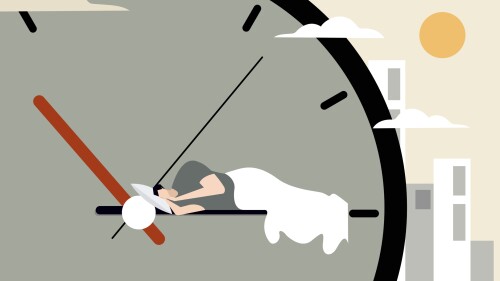Research summary
A secondary analysis of the EMS Sleep Health Study by examined real-time text-message assessments from 388 EMS clinicians across 35 U.S. agencies who logged 4,573 shifts between February 2020 and July 2021. Researchers compared pre-shift sleep, on-shift sleep, fatigue, sleepiness and difficulty concentrating across 8-, 10-, 12-, 24- and longer-duration shifts. Linear mixed-effects models accounted for agency clustering.
|More: 3 ways to mitigate EMS provider fatigue
Key findings reported in the International Journal of Environmental Research and Public Health from the article, “,” include:
- Sleep before duty averaged 6.2 hours and varied by shift length, with half of all shifts preceded by ≤6 hours of sleep
- On-shift sleep averaged 3.4 hours and increased with shift duration, but heavy call volume on 24-hour shifts sharply reduced rest
- Fatigue, sleepiness and concentration problems rose through the shift and peaked at 03:00–04:00 during 24-hour tours
- Napping during 12- and 24-hour shifts lowered end-of-shift fatigue; the effect was strongest on 24-hour shifts
Memorable quotes
Here are three memorable quotes from Patterson et al:
- “The highest level of fatigue, sleepiness, and difficulty with concentration during any shift occurred during 24 h shifts and corresponded to the early morning hours at 03:00 or 04:00 a.m.”
- “On-shift sleep during 12 h and 24 h shifts was associated with lower fatigue at the end of the shift (p < 0.0001).”
- “On-shift sleep (napping) during 12 h and 24 h shifts mitigates fatigue, sleepiness, and difficulty with concentration, with naps taken during 24 h shifts having greater impact.”
Top sleep reminders for EMTs and paramedics
Here are 5 top takeaways about the importance of sleep before, during and after an EMS shift.
Early-morning hours are the danger zone
Fatigue, drowsiness and concentration lapses spike around 03:00–04:00 on 24-hour shifts. Crews should schedule safety-sensitive tasks, driving and medication checks with added vigilance in this window and use buddy checks to offset decreased alertness.
Napping is a proven counter-measure
Even short naps during 12- and 24-hour tours significantly cut end-of-shift fatigue. The impact of this counter-measure is even greater on 24-hour EMS shifts. Agencies should formalize nap policies and ensure quiet, dark spaces so crews can capitalize on biologic low points without stigma.
High call volume steals sleep and fuels fatigue
On 24-hour shifts, greater patient encounters correlated with less rest and higher fatigue and sleepiness. Supervisors can use workload data to adjust staffing or redistribute calls when units near fatigue thresholds. EMS providers should anticipate higher fatigue levels and ensure adequate sleep during their shift and take advantage of opportunities to rest or nap during their shift.
6 hours of pre-shift sleep is not enough
More than half of shifts began after less than 6 hours of sleep, below the recommended sleep guidelines. EMS providers should adopt sleep-hygiene routines and schedule sufficient off-duty recovery; managers can reinforce time-off protections before long tours.
Fatigue monitoring should match shift diversity
Because fatigue patterns differed by shift length and start time, electronic self-checks or wearables can provide continuous data, allowing real-time interventions tailored to 8-, 12- and 24-hour schedules.
�������� is using generative AI to create some content that is edited and fact-checked by our editors.

















